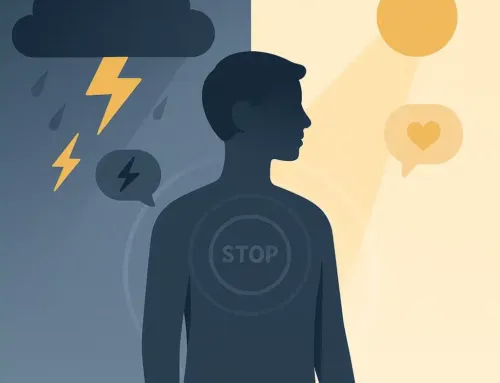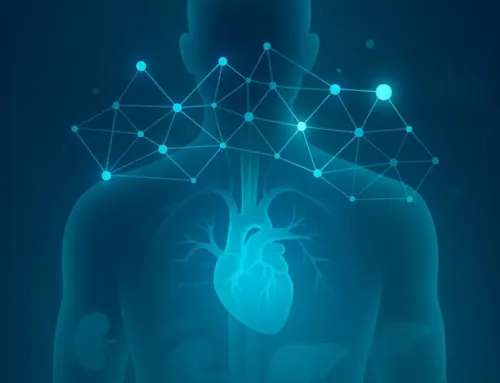
Approx. read time: 6.4 min.
Post: Why We Don’t See the Calm Until It’s Over During Chaos
Recognizing Calm Amid Chaos. Life often presents us with situations of chaos—moments when our routines are disrupted, stress takes center stage, and our ability to think clearly seems to vanish. Whether it’s a personal crisis, a societal upheaval, or global turmoil, chaos can be overwhelming, consuming every ounce of our attention and energy.
In the midst of such chaos, people often find it challenging to recognize signs of resolution or the underlying calm that might already be present. Instead, they feel stuck in the storm, unable to see the light at the end of the tunnel until the storm has passed. This phenomenon isn’t just a coincidence; it’s deeply rooted in human psychology, perception, and behavior.
This article explores why we fail to notice the calm within or after chaos and how understanding this can help us navigate turbulent times with greater clarity and resilience.
The Nature of Chaos: How It Hijacks Our Minds-Recognizing Calm Amid Chaos
1. Chaos Overload’s Our Senses
Chaos is, by definition, an overwhelming experience. It bombards us with stimuli that our minds struggle to process simultaneously. When we face a chaotic situation—whether it’s a natural disaster, an emergency at work, or an interpersonal conflict—our brain’s priority is survival. This state of hyper-focus on immediate threats and tasks leaves little room to perceive anything else.
Key points include:
- Fight-or-flight mode: The amygdala, a part of the brain involved in emotional processing, becomes hyperactive, triggering fight-or-flight responses. This reaction diverts energy away from higher-order thinking and introspection.
- Narrowed focus: We concentrate on what seems urgent and visible (the “noise”), while subtle cues of stability or resolution go unnoticed.
2. Emotional Intensity Blocks Perception
Chaos often evokes intense emotions such as fear, anger, or anxiety. These emotions can cloud judgment and impair our ability to detect patterns or solutions. Research in neuroscience shows that heightened emotional states reduce our cognitive flexibility, making it harder to identify the calm within or around us.
3. The Illusion of Perpetual Chaos
During turbulent times, humans tend to project current feelings into the future. This cognitive bias, known as affective forecasting, leads us to believe that the chaos will last indefinitely, making any sense of calm seem improbable. When stuck in this mindset, even small signs of resolution may feel insignificant or invisible.
Why We Only Recognize Calm in Retrospect
1. Hindsight Brings Clarity
Hindsight is powerful because it allows us to piece together events with a broader perspective. After chaos has subsided, the intense emotions and survival instincts diminish, enabling the brain to process memories more logically. This retrospective view often reveals patterns or moments of calm that went unnoticed during the chaos.
For example:
- A person recovering from a health scare may realize that there were moments of hope and stability even during their treatment.
- A team emerging from a challenging project might recognize periods of effective collaboration that were overshadowed by stress at the time.
2. The Brain Prefers Patterns
The human brain is wired to find meaning in patterns and sequences. When chaos ends, we naturally reconstruct events to make sense of them, often discovering the “calm” in hindsight. However, during the actual chaotic experience, our focus on immediate threats makes it difficult to see these patterns in real time.
3. Calm Feels Underwhelming
Another reason calm remains unnoticed during chaos is that it lacks the emotional intensity of the surrounding turmoil. In a chaotic situation, we are attuned to big, dramatic shifts. Quiet stability, on the other hand, doesn’t grab our attention as readily. As a result, we often dismiss or overlook moments of calm until we have the space to reflect.
Cultural and Societal Factors Amplify Chaos Perception-Recognizing Calm Amid Chaos
1. Media and Chaos Amplification
In today’s digital age, media and social networks play a significant role in shaping our perception of chaos. Sensational headlines and viral posts amplify crises, making them appear more pervasive and prolonged than they may be in reality. This constant exposure to chaos-related content can condition people to focus more on turbulence and less on underlying calm or resolution.
2. Social Validation of Struggle
Culturally, struggle is often romanticized or given more attention than calmness or resilience. Stories of chaos and survival are celebrated, while the quieter moments of resolution are overlooked. This societal focus reinforces the tendency to perceive and dwell on chaos.
Strategies to Recognize Calm During Chaos
Recognizing calm while chaos unfolds requires intentional effort. Here are some strategies to develop this ability:
1. Cultivate Mindfulness
Mindfulness practices, such as meditation or deep breathing, help train the brain to focus on the present moment rather than the turmoil surrounding it. By anchoring oneself in the “now,” it’s easier to spot moments of calm, even in a storm.
2. Reframe Perception
Instead of viewing chaos as purely disruptive, consider it as a natural process that eventually leads to change and resolution. This mental reframing can help shift focus toward stability and growth opportunities.
3. Focus on Small Wins
In chaotic situations, progress often occurs in small steps. By celebrating incremental achievements, we can redirect attention to the calm and order emerging alongside the chaos.
4. Limit External Noise
Reducing exposure to sensationalized news or chaotic narratives can help create mental space to recognize calm. Prioritizing reliable sources of information and engaging in restorative activities can also promote balance.
Real-Life Examples of Calm Within Chaos
1. Nature’s Resilience
Natural disasters, such as hurricanes or wildfires, often leave behind devastation. Yet, nature demonstrates resilience and renewal in remarkable ways. Plants regrow, ecosystems adapt, and life finds balance. Observing these patterns can be a metaphor for finding calm within human chaos.
2. Historical Perspectives
History is full of examples where calm and resolution followed periods of intense turmoil. From the rebuilding efforts after wars to societal progress following civil rights movements, these moments remind us that chaos is not permanent.
3. Personal Growth Through Adversity
Many individuals who have faced personal crises report discovering inner strength, purpose, or clarity they didn’t realize they possessed during the chaos. These reflections often emerge once the turmoil has passed, but the seeds of calm were planted during the struggle itself.
The Importance of Recognizing Calm in Chaos
Failing to recognize calm during chaos can prolong stress and reduce resilience. On the other hand, learning to identify and embrace moments of stability can provide several benefits:
- Emotional Regulation: Recognizing calm helps manage stress and maintain a balanced perspective.
- Enhanced Decision-Making: Acknowledging moments of stability allows for clearer thinking and better decisions.
- Building Resilience: Practicing calm recognition strengthens the ability to endure future challenges.
Conclusion
Chaos is an inevitable part of life, but so is calm. The challenge lies in recognizing the latter amid the noise and turmoil of the former. By understanding why chaos captures our attention and calm often goes unnoticed, we can develop strategies to better navigate turbulent times. Through mindfulness, reframing, and focusing on small wins, we can train ourselves to spot the seeds of stability even during our most difficult moments.
In doing so, we not only survive chaos but emerge from it with greater wisdom and strength, realizing that calm was always there—we just needed to learn how to see it.
Related Videos:
Related Posts:
Importance of Cardio, Strength, and Stability for All Ages
Self-Care Shenanigans: A Hilariously Honest Guide to Finding Your Zen Amidst the Chaos
Interwoven Realms: Unraveling the Connection Between Touch and Time Perception
Embracing Chaos: My Superpower of Thriving Under Pressure
Embracing Life’s Cycles: Lessons on Growth, Resilience, and Purpose









